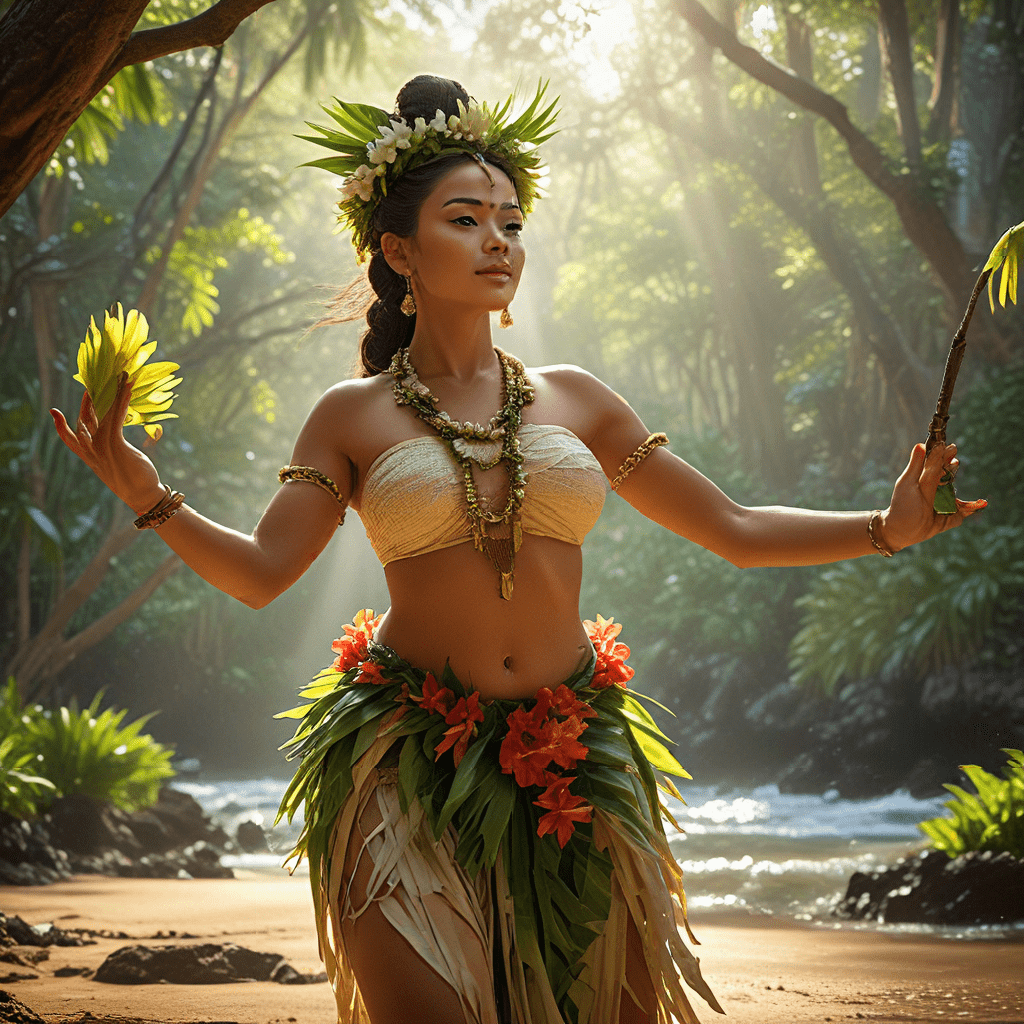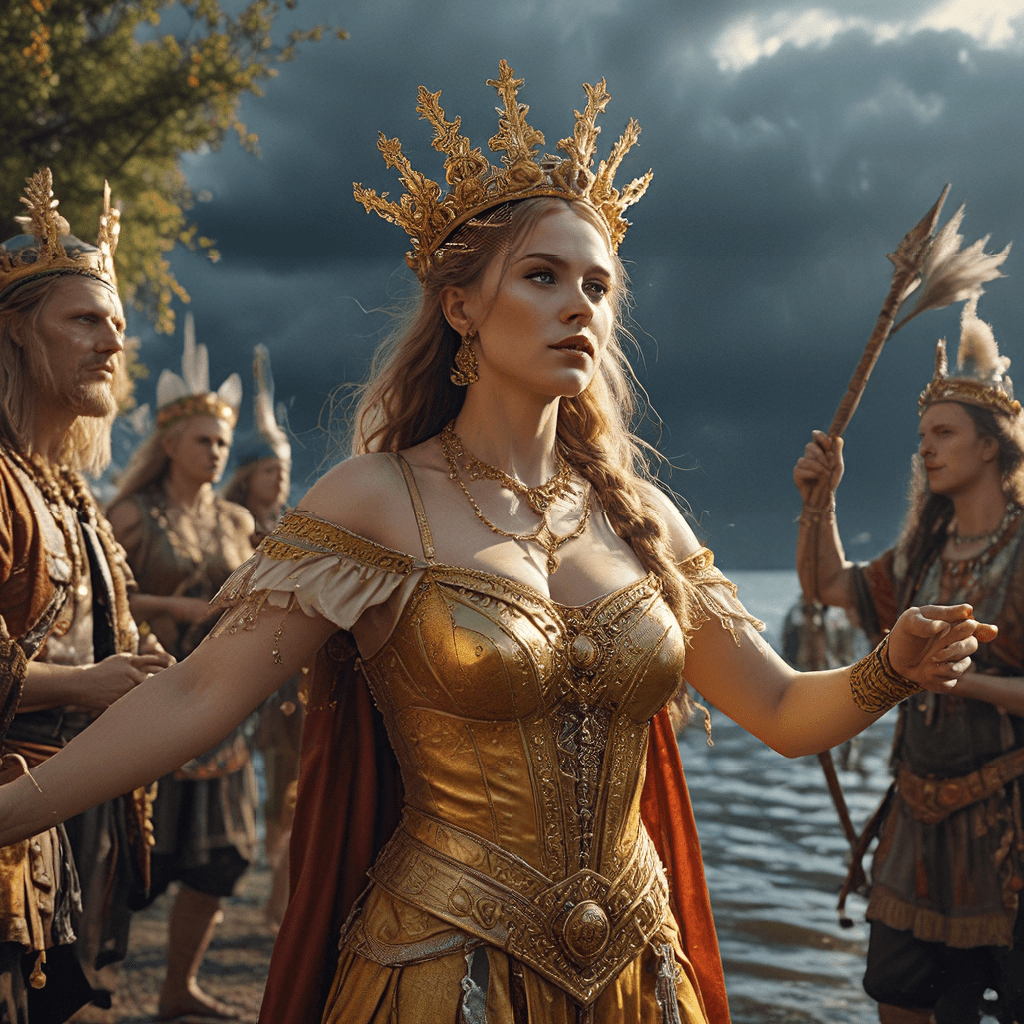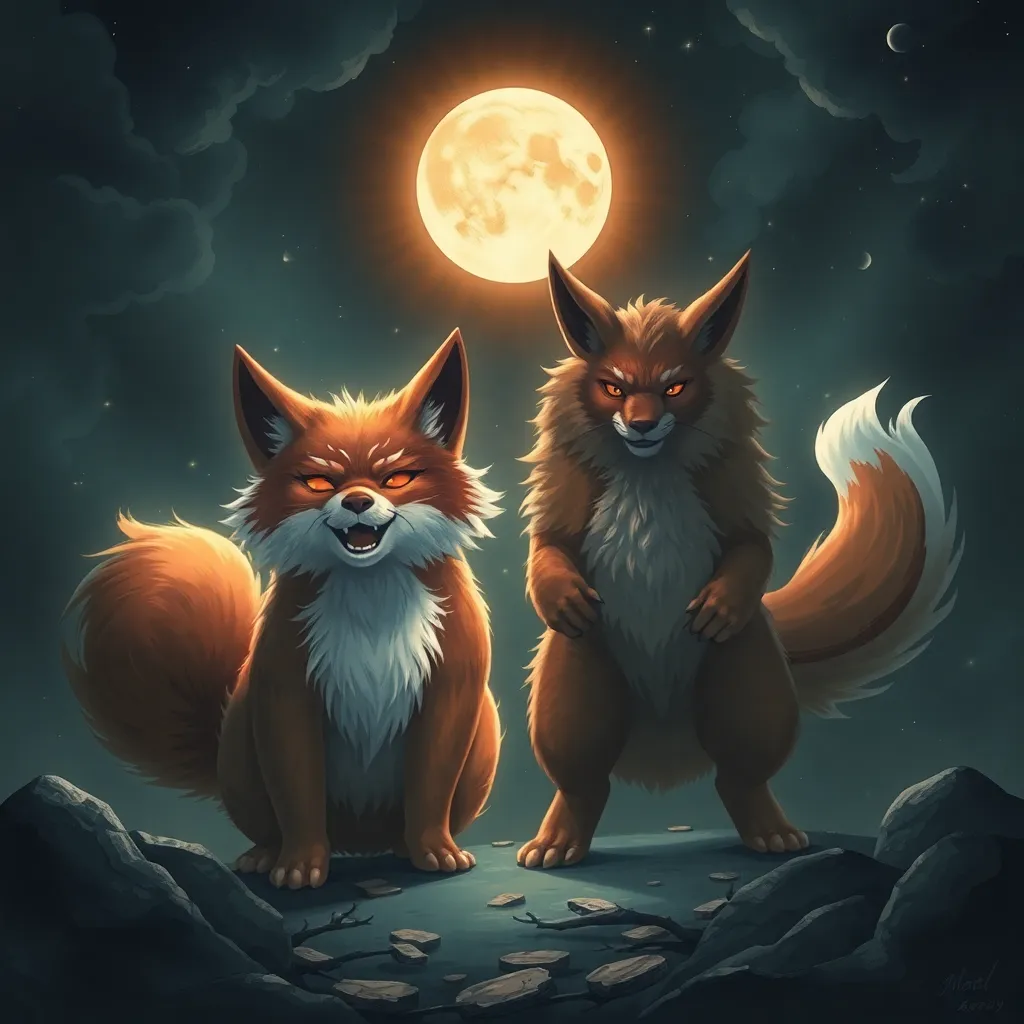Hawaiian Goddess of Hula: Laka’s Story
In the vibrant tapestry of Hawaiian mythology, Laka stands as a revered figure, the goddess of hula and a guardian of the arts. Her story weaves together themes of nature, creativity, and the enduring spirit of tradition. Laka's presence is deeply felt in the graceful movements and expressions of the hula, a sacred dance that continues to be a vital part of Hawaiian culture.
The Birth and Lineage of Laka
Laka's origins are shrouded in the mists of time, her story passed down through generations of oral tradition. She is often described as a daughter of the sky god, Wakea, and the earth goddess, Papa. This lineage places her at the heart of creation, highlighting her connection to the life-giving forces that shape the world. Some accounts suggest that she was also born from the union of the volcano goddess, Pele, and the god of the ocean, Kanaloa. This connection points to the powerful forces of nature that are inherent in Laka's presence.
Laka’s Role as a Guardian of the Arts
Laka's influence extends beyond the hula to encompass various forms of artistic expression in Hawaiian culture. She is revered as the guardian of the arts, protecting the knowledge and traditions passed down through generations. Her presence is felt in the creation of music, the weaving of intricate tapestries, the carving of intricate sculptures, and the crafting of beautiful jewelry. Laka's power is believed to inspire creativity, innovation, and the expression of the human spirit through various artistic mediums.
Laka’s Connection to Nature and the Land
Laka's realm extends beyond the realm of art and into the natural world. She is deeply connected to the land and the forces of nature. Her presence is felt in the rustling of leaves, the crashing of waves, and the whispers of the wind. She is associated with specific plants, such as the ohia lehua tree and the hala tree, which play significant roles in Hawaiian culture and tradition. These plants symbolize the interconnectedness of all living things and Laka's power to nourish and nurture the land.
The Hula as a Sacred Expression of Laka’s Power
The hula, a sacred dance form, is considered to be the embodied expression of Laka's spirit. Through the graceful movements of the dancers, the swaying of their hips, and the rhythmic clapping of their hands, Laka's power is brought to life. The hula is not just a dance; it is a storytelling tradition, a way of honoring ancestors, and a means of connecting with the divine. It is a testament to the beauty and grace that Laka embodies.
Theories on the Origin of Laka
While Laka's connection to the sky god, Wakea, and the earth goddess, Papa, places her firmly within the Hawaiian pantheon, there are interesting variations in her origins. Some myths suggest Laka's birth from the union of the volcano goddess, Pele, and the god of the ocean, Kanaloa. This connection emphasizes Laka's inherent power and agency, signifying her ability to navigate and control the powerful forces of nature, as seen in the volcanic eruptions and the tumultuous ocean. Another theory connects Laka to the Polynesian goddess of fertility and abundance, Hina, hinting at Laka's role as a symbol of life, growth, and creative expression in Hawaiian culture.
Laka as a Representation of Fertility and Creativity
Laka's association with the hula and her connection to the natural world solidify her role as a symbol of fertility and creativity. The hula's fluid movements and rhythmic beats represent the cycle of life, the ebb and flow of nature, and the inherent power of creation. The dance itself, born from the earth and inspired by the elements, is a physical manifestation of Laka's energy. Laka is often depicted with a lei of flowers or other natural adornments, highlighting her link to the abundance and bounty of the earth. She is also associated with the ohia lehua tree, a symbol of love, passion, and the life-giving forces of nature.
Laka and the Importance of Preservation of Tradition
Laka's role as a guardian of artistic traditions underscores the importance of preserving cultural heritage. The hula is not just a dance but a repository of knowledge, history, and cultural values passed down through generations. Through the hula, Laka guides the preservation and transmission of stories, legends, and traditions, ensuring that the cultural legacy of the Hawaiian people endures. Her presence reminds us that culture is a dynamic and living entity, constantly evolving and adapting while retaining its core values.
Laka’s Legacy: The Enduring Spirit of Hula
Laka's story continues to resonate in the hearts of the Hawaiian people and beyond. The hula remains a vibrant expression of their cultural identity, a testament to Laka's enduring influence. The dance continues to evolve, adapting to the changing times while maintaining its connection to ancient traditions. Laka's legacy extends beyond the hula, inspiring artists, musicians, and cultural practitioners to cultivate their creativity and preserve their cultural heritage. The story of Laka serves as a reminder of the vital role that art and tradition play in shaping our understanding of the world and fostering a sense of community.
Frequently Asked Questions
Q: What is the significance of Laka in Hawaiian mythology?
A: Laka is the Hawaiian goddess of hula and a guardian of the arts. She is deeply connected to nature, fertility, and creative expression.
Q: How is Laka connected to the hula?
A: The hula is considered to be the embodied expression of Laka's spirit. It is a sacred dance form that celebrates nature, tradition, and the creative spirit.
Q: What are some of the symbols associated with Laka?
A: Laka is associated with ohia lehua trees, hala trees, and lei of flowers, all of which symbolize fertility, abundance, and the life-giving forces of nature.
Q: How does Laka promote the preservation of tradition?
A: Laka's role as a guardian of art reinforces the importance of preserving cultural heritage. The hula is a living tradition that transmits stories, legends, and cultural values through generations.
Q: What is the enduring legacy of Laka?
A: Laka's story inspires artists, musicians, and cultural practitioners to cultivate their creativity and preserve their cultural heritage. The hula continues to thrive as a testament to Laka's enduring influence and the power of tradition.



